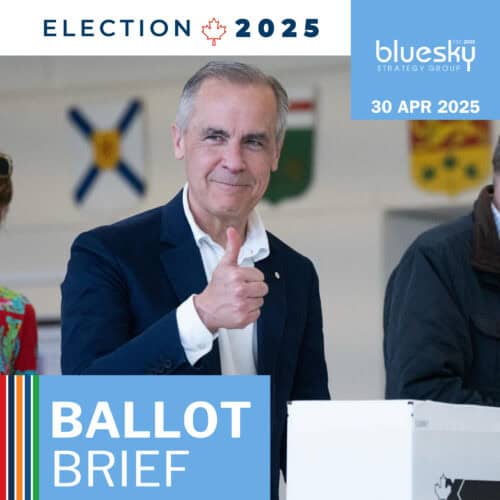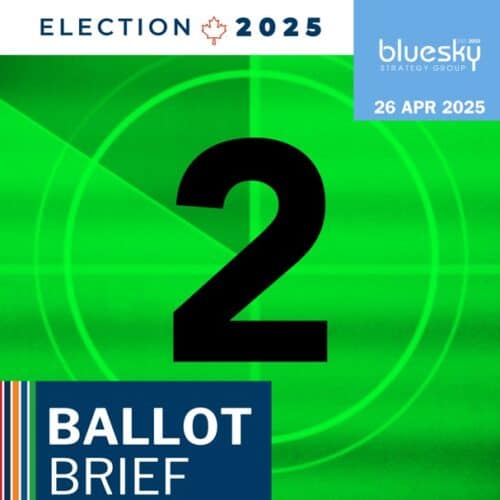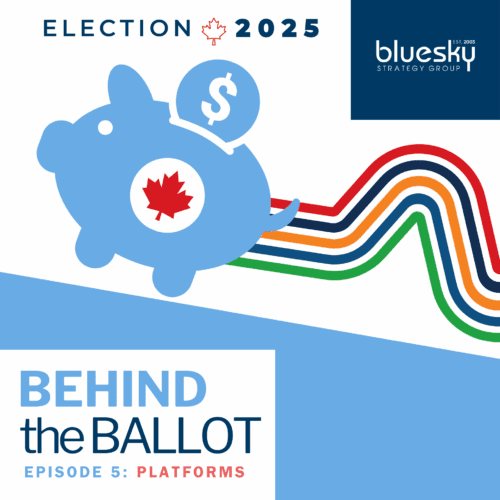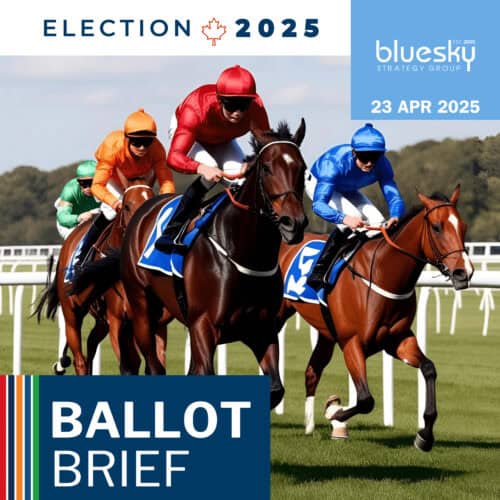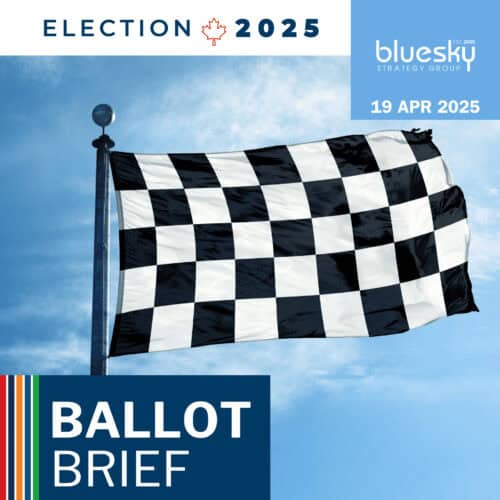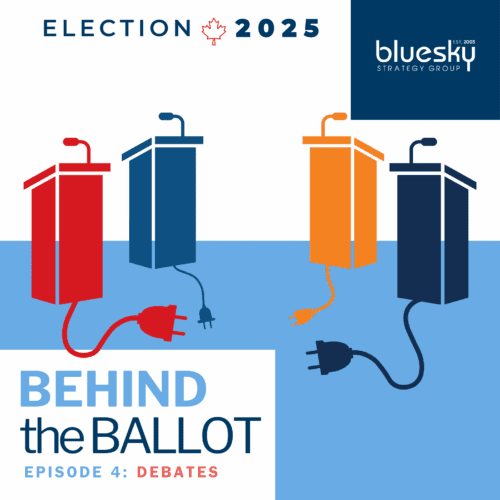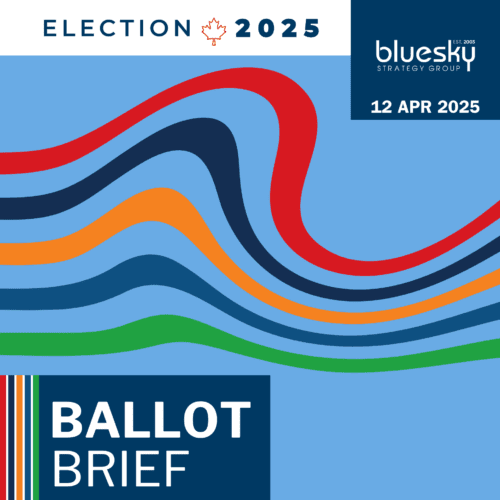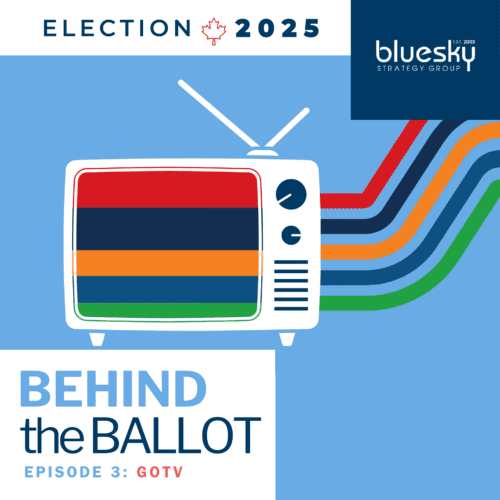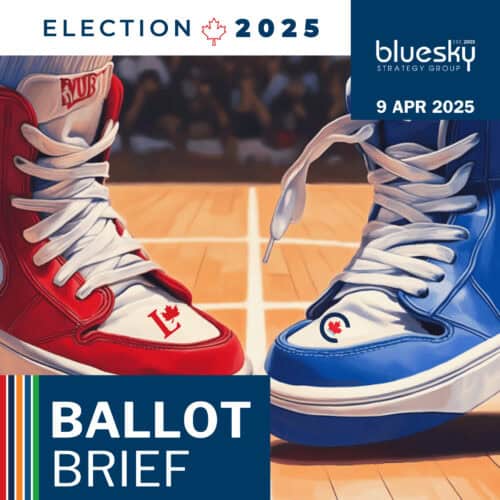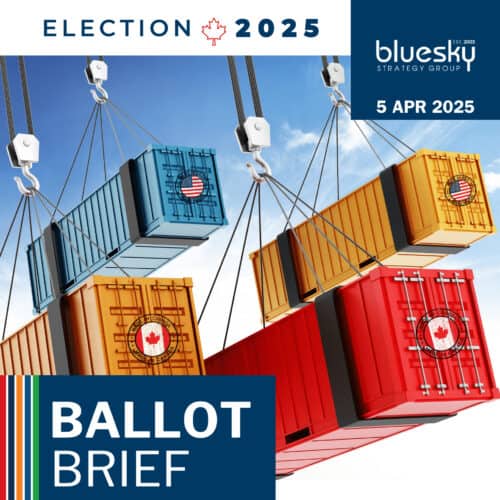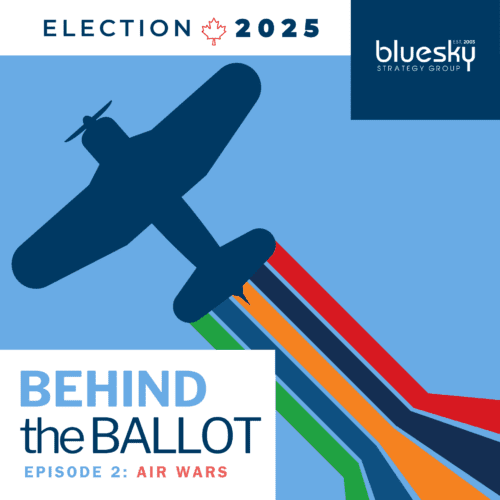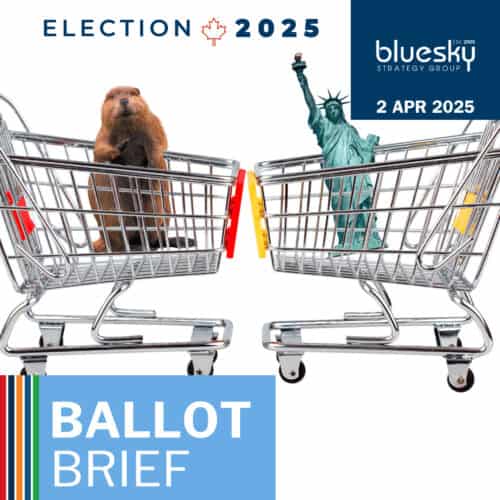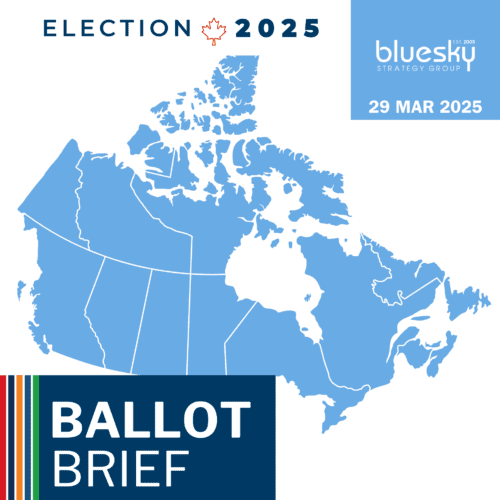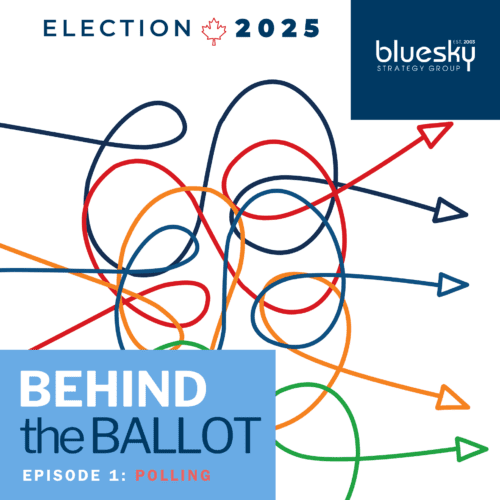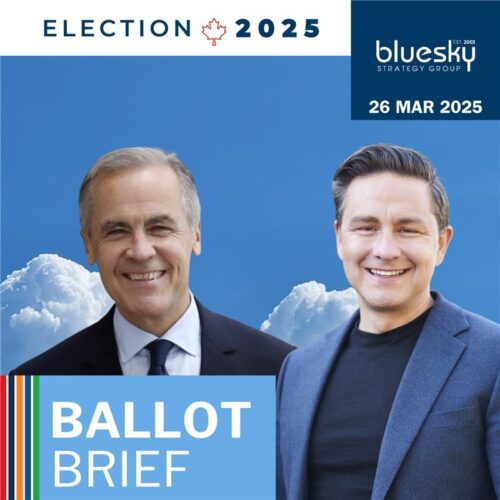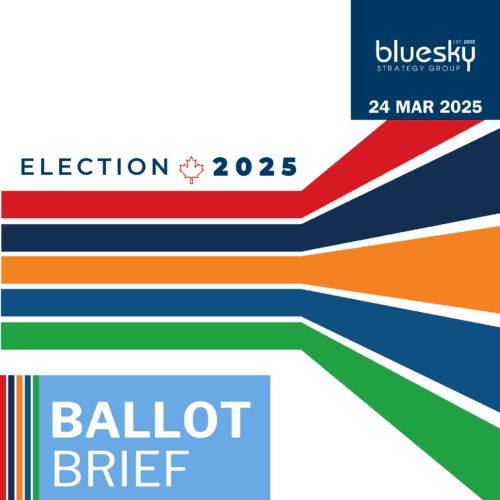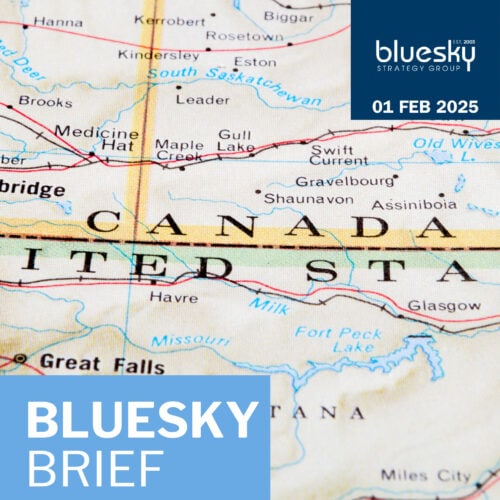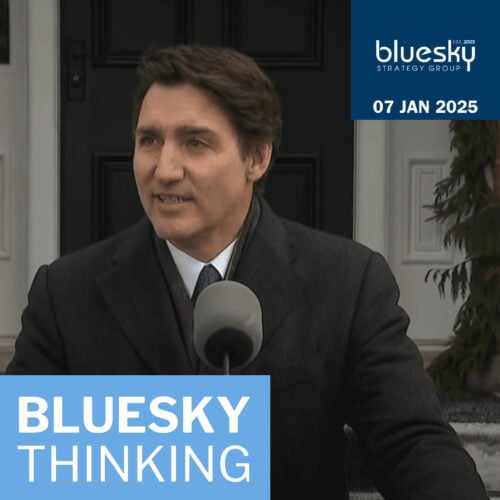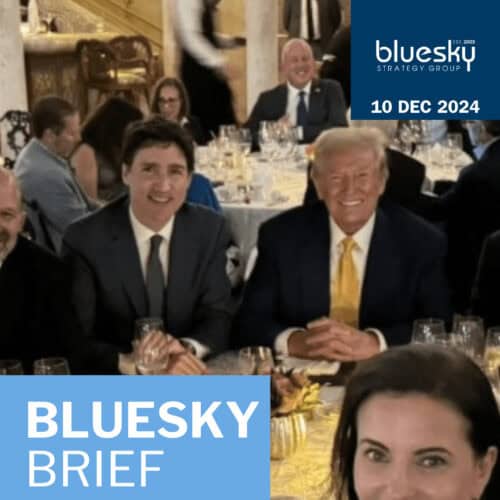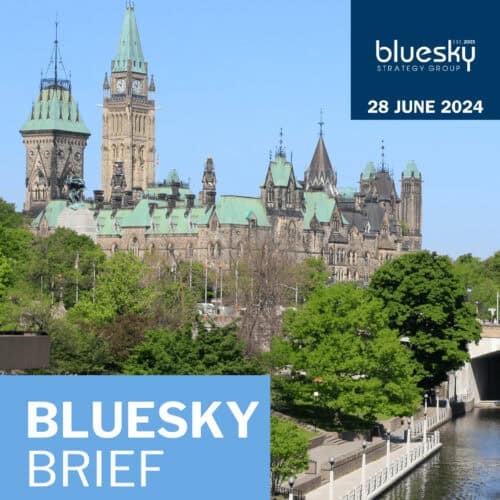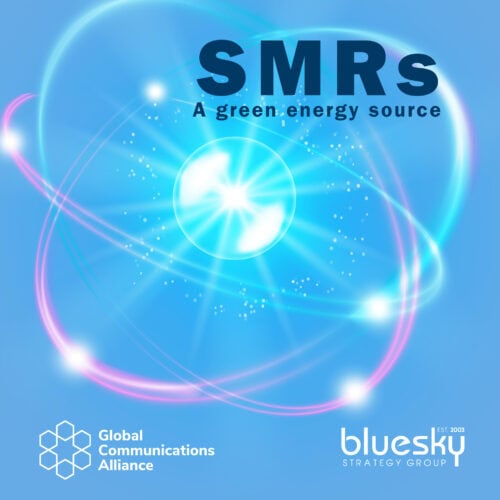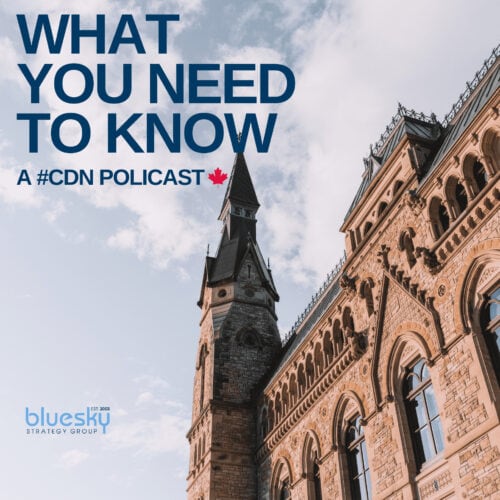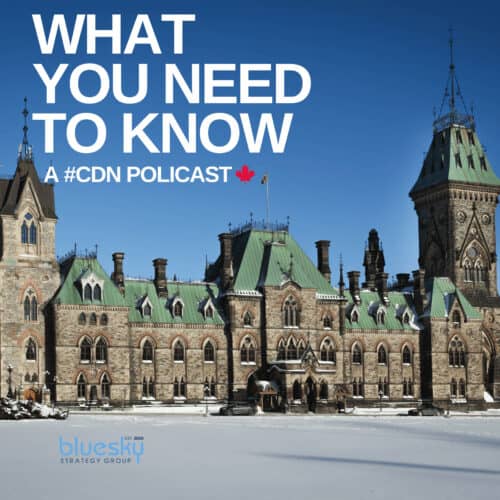With the leaders’ debates behind us, the Easter long weekend advance polls are open, and the campaign’s final stretch is underway. Here’s what you missed since the final face-off (and not the Habs-Canes game).
The Rundown
Security and Affordability: Between debates, Conservatives unveiled Part II of their Canada First Arctic Defence Plan, promising upgraded bases, surveillance aircraft, and a naval base in Churchill to counter threats from Russia and China. Pierre Poilievre also vowed to scrap the Liberal plastic ban, block a proposed food packaging law he calls a “food tax,” and transfer $22 billion in frozen Russian assets to Ukraine to support its defence and rebuilding.
Quebec First: Following the debates and surrounded by several of his Quebec candidates, NDP leader Jagmeet Singh unveiled its “In it for Quebecers” platform, pledging to build a national east-west power grid, defend French language and culture, protect freshwater, and fully support farmers and supply management – while standing up to Trump and Ottawa’s cuts.
Priorité Québec: Bloc Leader Yves-François Blanchet pledged full support for all of Premier François Legault’s demands and unveiled new housing plans—including $20,000 interest-free loans and GST relief for first-time buyers—alongside a $7B investment in social and affordable housing. His message: the Bloc exists to defend Quebec, and only Quebec.
Renewed Vision: Following their exclusion from the debates, the Green Party released their full election platform. Framed as a rejection of the status quo, it lays out transformative policies for those who’ve been marginalized, sidelined, or ignored. The party also shared the Parliamentary Budget Officer’s costing for their plan.
The Inside Track
- The real focus this long weekend is the four days of advance voting and a full-blown “Get Out the Vote” (GOTV) push on the ground. As Bluesky detailed in last week’s Behind the Ballot, GOTV is the true heart of every campaign, identifying likely supporters and making sure they cast a ballot. If you’ve ever been nice to a canvasser, brace for calls, emails, and “door hanger” cards this weekend. Pro tip: If you’ve decided, vote early and skip the election day rush and put a stop to those GOTV calls and visits. Next week, keep an eye on where the leaders show up, as it usually signals where they think it is a close race or a last-ditch effort to save a seat.
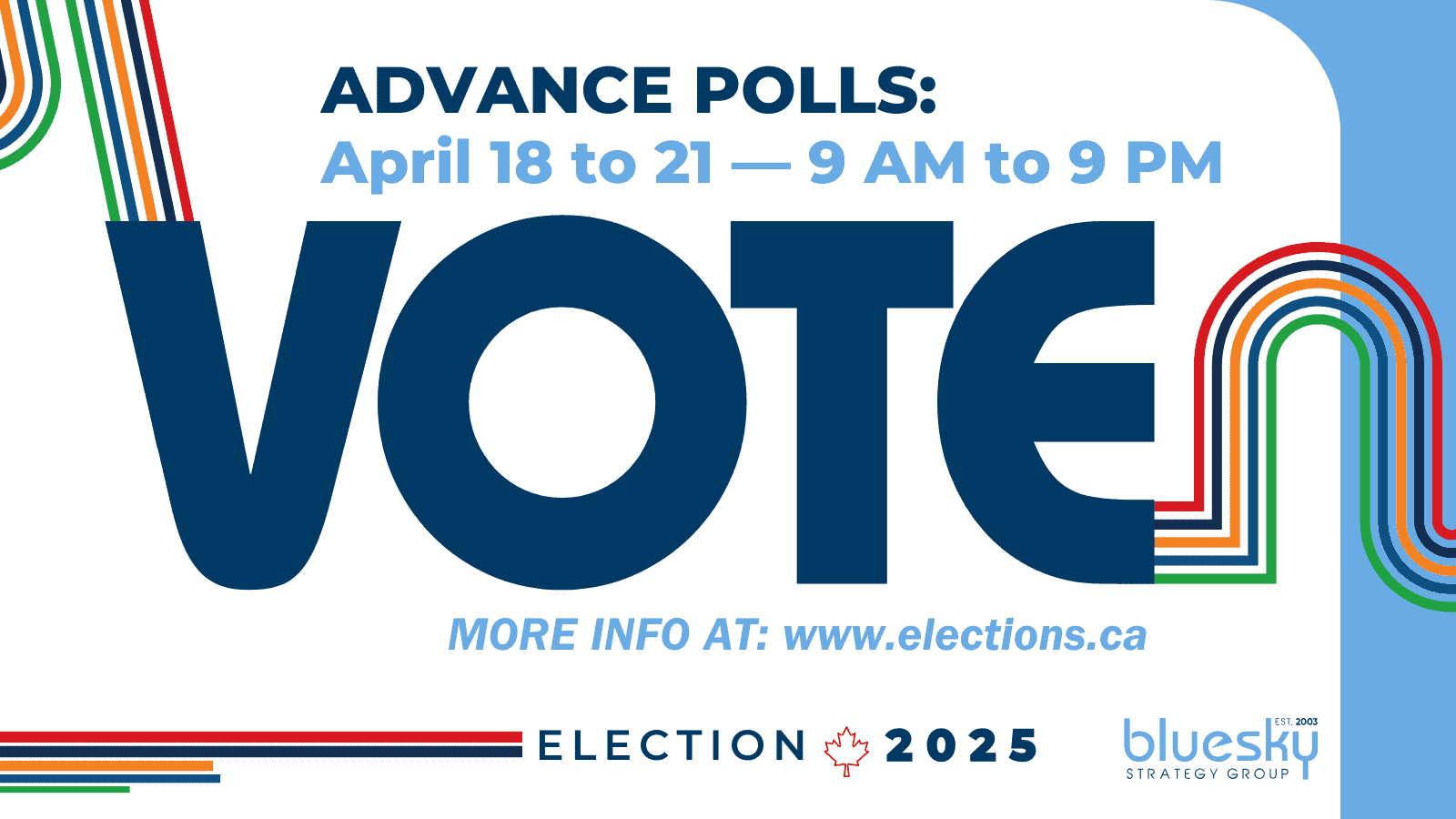
- Campaigns were expected to put out full platforms before the debates, but most parties held off. The Liberals say theirs is coming this long weekend, the Conservatives have been less specific but promising one soon, and the NDP even less so. These days, platforms aren’t about full costing but are tools for targeting key voters in key regions. Delays allow for last-minute tweaks based on polling or public mood.
- Liberal leader Mark Carney emerged from the debates with few bruises from the inevitable pile-on, maintaining his calm, strategic tone and reinforcing his frontrunner image. With polls tightening, the Liberals still hold the advantage, banking on a motivated base and a more efficient vote to stay on a majority track in the final stretch.
- The Conservatives left the debates energized by Poilievre’s solid performance, which refocused attention on affordability and the desire for change. Poilievre also used the opportunity to position the Conservatives as a clear contrast to both the current government and Carney, as the new Liberal leader, emphasizing what they view as a continuation of the status quo. Poilievre doubled down on criminal justice, backing the use of the Charter’s notwithstanding clause to ensure multiple life sentences for multiple murders – a move the party says aligns with public sentiment. With the final weekend approaching, the party is leveraging a well-organized ground game, buoyed by strong rallies, volunteer turnout, and donation levels. Poilievre maintains a relentless pace, having not taken a day off since the writs were issued.
- Following a combative showing in the French-language debate, Singh faced scrutiny over his strategy. His decision to go hard at Poilievre raised eyebrows, as many observers argue his real challenge lies in stopping the Liberal drift, particularly with Carney appealing to progressive voters wary of a Conservative win and trying to block a Poilievre government. The English debate saw him remedy his strategy significantly, turning his attention to Carney and his reversal of the capital gains rate hike – a move he sees as contrary to the interests of working-class Canadians. With NDP support vulnerable in key urban ridings, especially in B.C., Singh faces the difficult task of convincing left-leaning voters that a vote for the Liberals isn’t the only path to stopping the Conservatives.
South of the Border
Trump Targets Key Sectors: The Trump administration has (finally?) launched national security investigations into imports of semiconductors and pharmaceuticals under Section 232 of the Trade Expansion Act, which are expected to lead to new tariffs targeting key suppliers like China, Taiwan, and the EU. Commerce Secretary Howard Lutnick called the sectors “non-negotiable” as part of a broader push to onshore critical supply chains. Canadian exporters could feel the impact, depending on the scope and timing of these long-discussed sector-specific measures.
To Tariff or not to Tariff Autos? President Trump is reportedly considering a pause on the 25 per cent auto tariffs imposed earlier this month, following pushback from industry groups and allies. The potential exemption, according to the President, would give automakers, including Canadian manufacturers, time to adjust supply chains, with officials viewing it as a tactical pause, not a policy shift.
Tariff Challenges Mount: Legal opposition to Trump’s use of emergency powers to impose tariffs is growing. A lawsuit from the New Civil Liberties Alliance argues his use of IEEPA is unconstitutional, citing the lack of a real national emergency. Meanwhile, the administration’s refusal to comply with a Supreme Court deportation ruling has drawn rebuke from federal courts, prompting broader concerns about the executive branch ignoring judicial authority, which could spill over into legal challenges to Canada-focused tariffs.
Hot… or Not?
Rockin’ in the Free World! Famous non-resident Canadian singer-songwriter Neil Young stepped into the political fray this week. Although he hasn’t lived in Canada since 1966 – or, as the National Post points out, 17 elections ago – Young published a letter on his website endorsing Carney. While Young has not shied away from commenting on politics through his protest songs over the course of his career, this letter was a direct endorsement of Carney – “Mr. Carney, I believe you are the person to do it.”
Talking ‘Bout Z, Z, Z Generation: While the Liberals seem to be appealing to most Canadians at the moment, it is the Poilievre campaign that seems to be speaking to Generation Z. Housing costs and affordability are top of mind for many young Canadians just entering the work force and the Conservative campaign seems to have struck a chord.
Rebel, Rebel: The post-debate scrums questions following the French debate seemed to be a little lopsided, with the far-right wing outlet, Rebel News, dominating the questions. When Singh took the podium, he made it clear he would not answer their questions, stating that outlets like Rebel and True North exist to spread disinformation. There has been some confusion around how Rebel News gained press credentials and managed to have more representatives than other mainstream media outlets. Scrums were cancelled outright following the English debate, with organizers citing security concerns and a lack of a “proper environment.” Both outcomes were a bit of a black eye for the Leader’s Debates Commission.
Like Layton: According to Abacus Data, Carney’s polling numbers are not solely reliant on his perceived ability to stand up to Trump. It seems people are starting to like him as he has a favourable rating of 48 per cent positive, 28 negative. This level of likability has not been seen since Jack Layton and the “Orange Wave” during the 2011 election, when the NDP won Official Opposition, a first for that party.
Gunn Target: The Conservative candidacy of Aaron Gunn continues to be a lightning rod for protests and attacks in B.C. throughout this campaign. Gunn’s past comments around residential schools have resulted in calls by First Nations leaders, residential school survivors, educators and community workers for him to withdraw his candidacy, including rallies, and a petition with more than 19,000 signatures. Conservative leader Poilievre has chosen to stand behind his candidate, suggesting the allegations towards his candidate are “misinformation.”
Bluesky Bonus
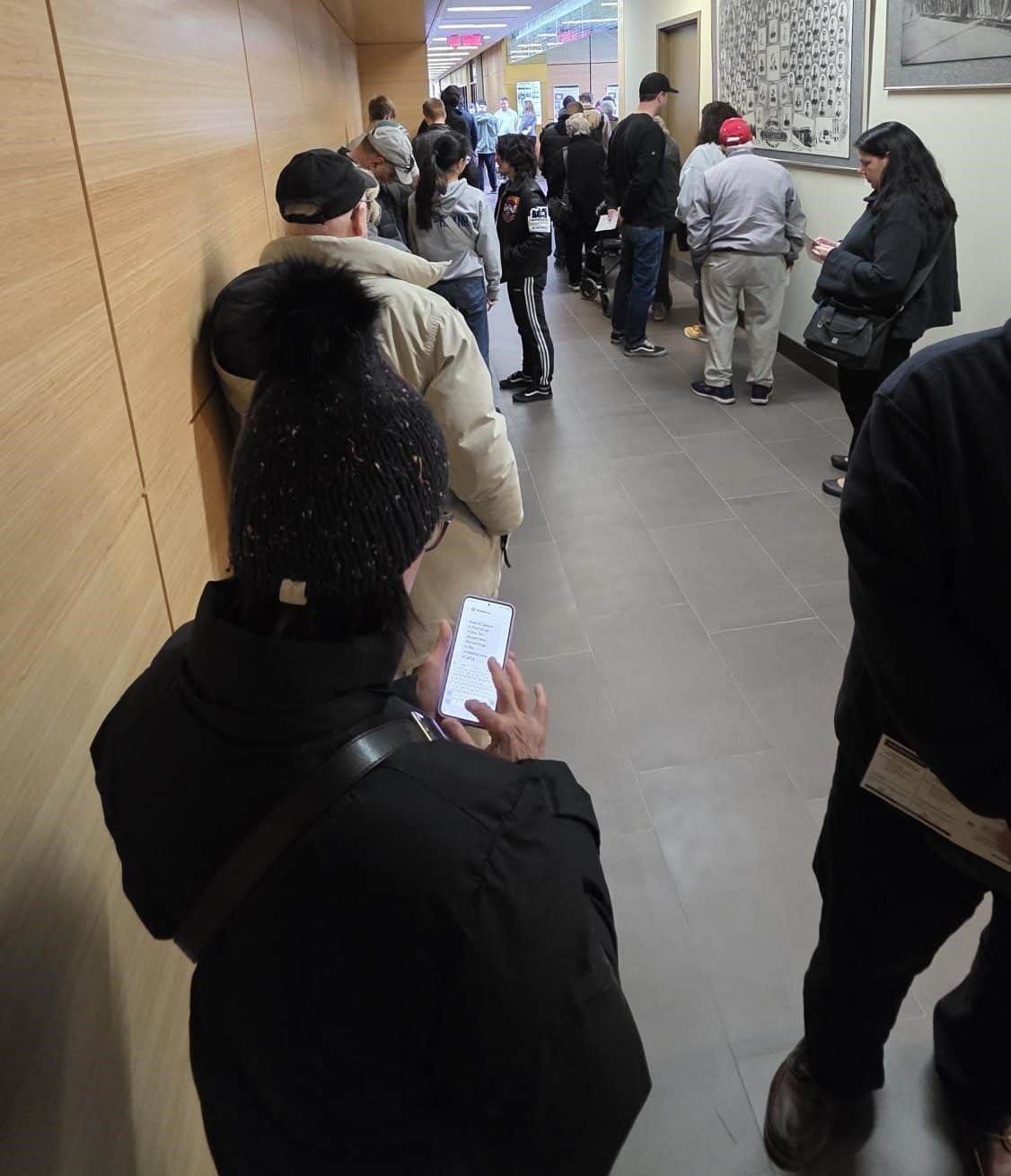
Democracy in Action: With advance voting underway, Canadians are showing up in strong numbers. Our Executive Vice-President, Stuart McCarthy, waited more than an hour to cast his ballot in Ottawa – a powerful reminder that participation matters. Every vote counts. Let’s keep turning up and tuning in.
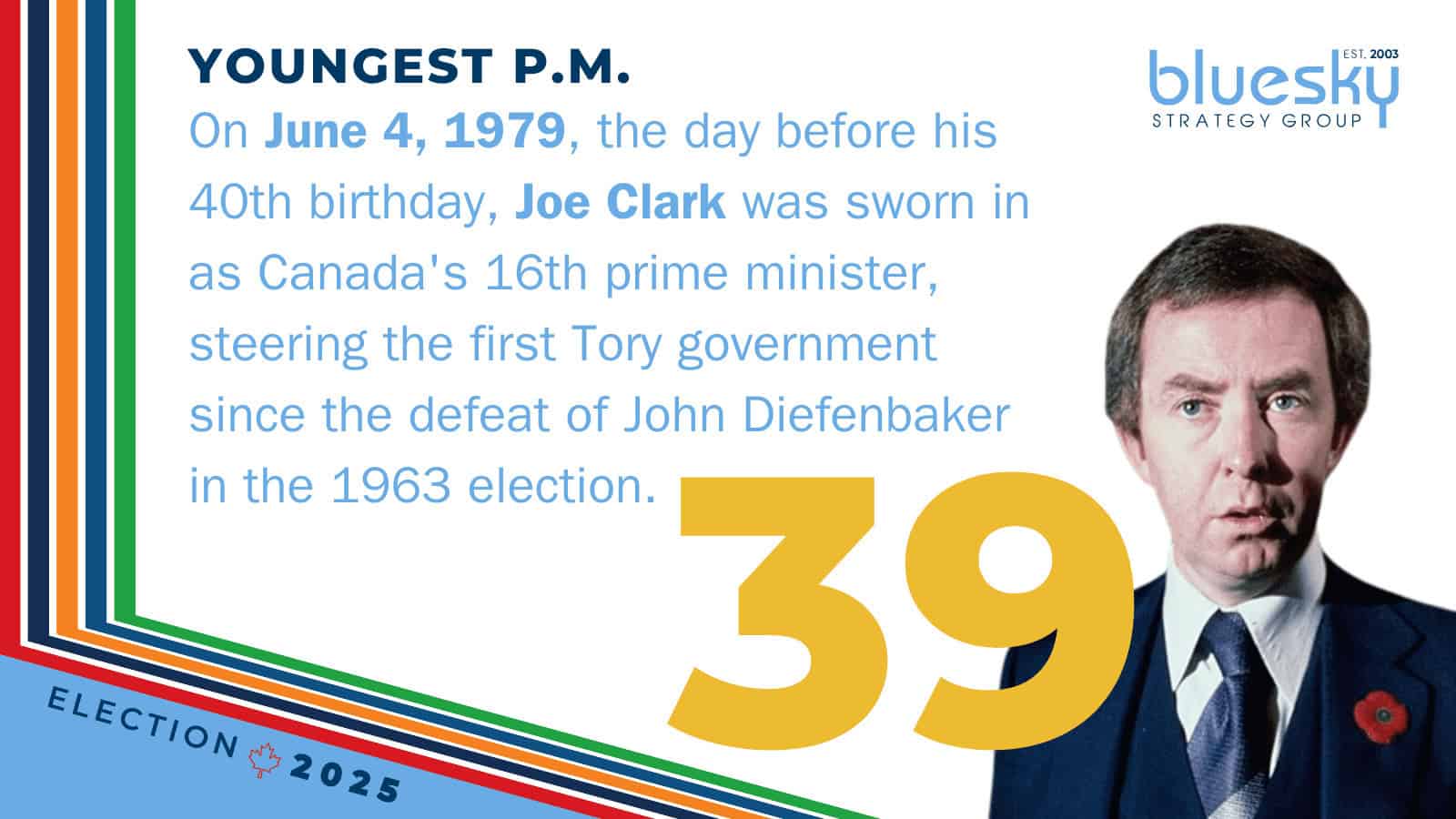
Social Snapshot: Did you catch this post from our social accounts this week? What did you do the day before your 40th birthday? #DidYouKnow Joe Clark became prime minister – still Canada’s youngest PM ever.
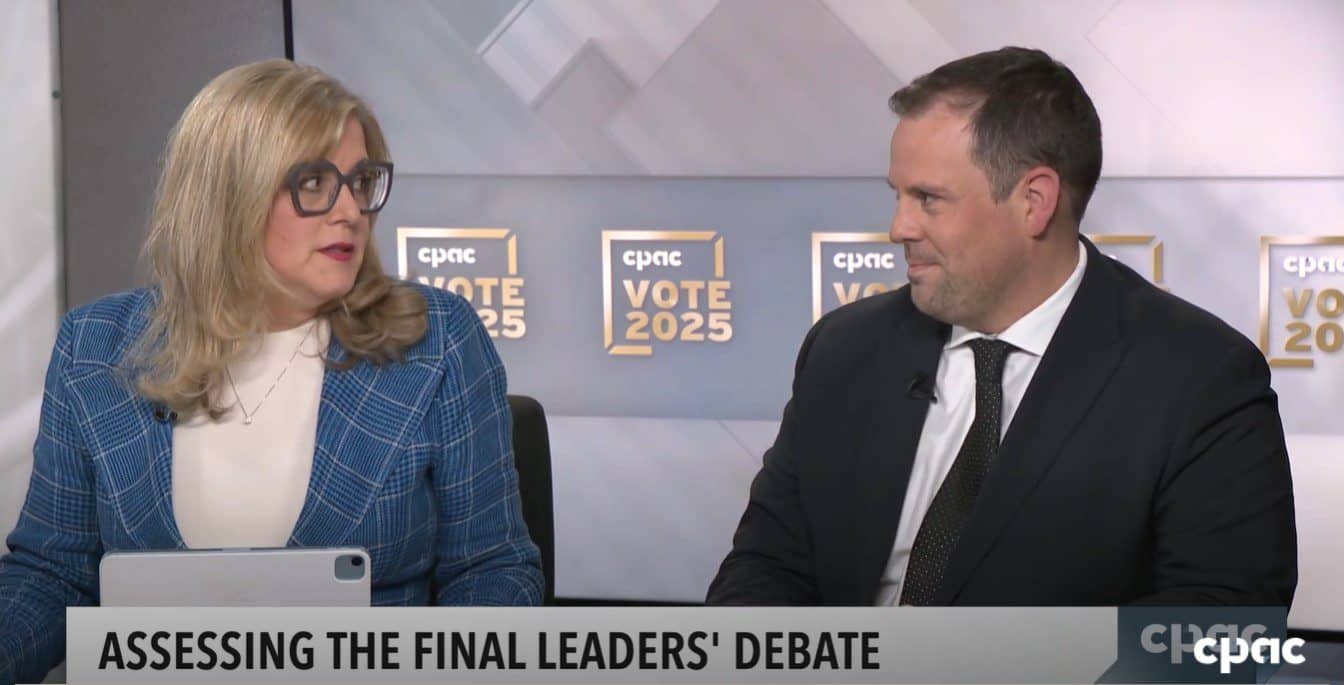
Bluesky on the Air: Late into the night, Principal and Co-founder Susan Smith and Vice-President Jordan Paquet could be seen repping Team Bluesky for several hours on CPAC’s coverage following the English debate. Before that, Susan provided post-French debate analysis on CBC’s Morning Live with Heather Hiscox, and Jordan spoke with Global National’s Mackenzie Gray.
Missed Episode 4 of Behind the Ballot? Catch the replay now.
In our latest episode, Consultant Emily Szemethy is joined by University of Ottawa Professor André Lecours to break down key moments from the French-language leaders’ debate — and preview what to watch for in the upcoming English debate. From standout lines to shifting strategies, this conversation is your quick catch-up on how the debates are shaping the road to Election 2025.
Missed an episode?
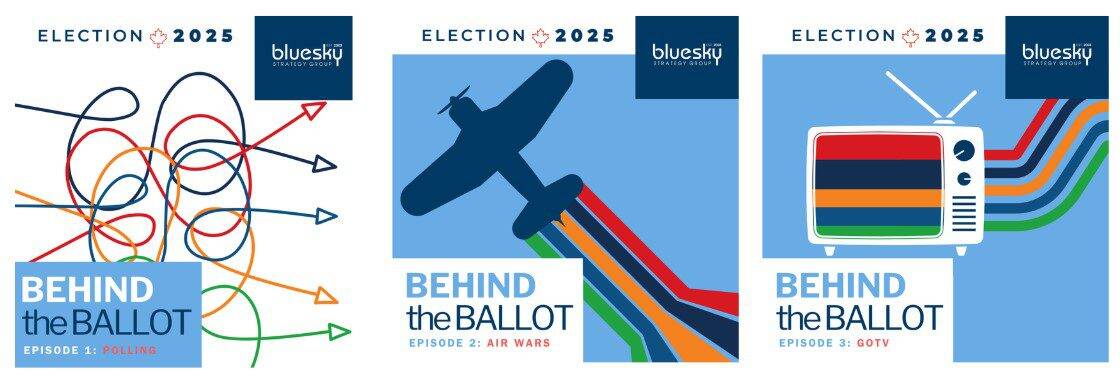
All episodes are now available to stream online from our Insights page. From polling trends and media strategy to grassroots organizing and debate breakdowns, we’re tracking the forces driving Election 2025. Catch up now and stay informed.
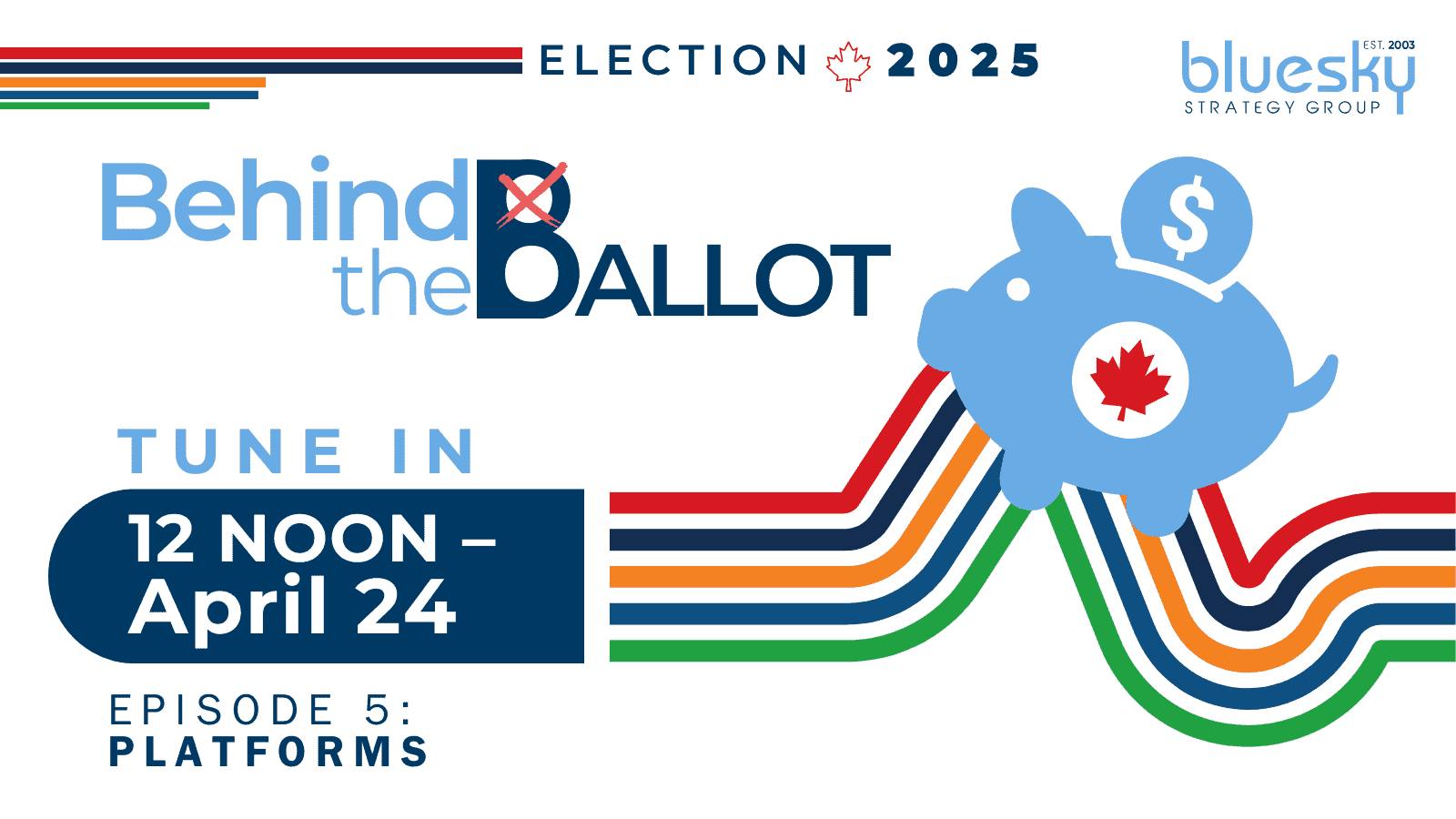
Join us on Thursday, April 24, at noon for the next episode of Behind the Ballot.
Senior Consultant Greg Loerts sits down with Sahir Khan, Executive Vice-President of the Institute of Fiscal Studies and Democracy (IFSD), for a timely breakdown of each major party’s platform — and the costing behind them.
From headline promises to the fiscal realities, we’ll explore what the numbers reveal about each party’s priorities heading into Election Day.
